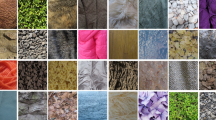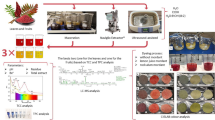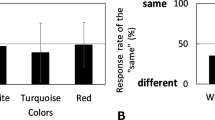Abstract
IN numerous text-books the colours of mother-of-pearl are included amongst phenomena of colour produced by striated surfaces, and though it is conceded that only a part of the colour is due to this cause, that part is generally assumed to be, at any rate, an appreciable quantity. Experiment will show, however, that such is not the case. When the colour produced by the striations is viewed in an impression of the pearl on sealing-wax or gelatine it is visible, though it is totally different in character from the iridescence of the pearl itself, in which the tiny contribution of colour from the striations is completely overpowered by that due to another cause. In white mother-of-pearl the striations are often as close together as in coloured varieties, and at certain angles, when viewed by light from a defined source, there is a little colour visible in the white specimens; just so much, and no more, is contributed by the striations of the coloured specimens, as may be shown by viewing a piece under the surface of water, when the effect of the striations is necessarily abolished, though the iridescence is not at all appreciably diminished. The whiteness of some varieties must be attributed to a different thickness or greater opacity of the laminae. It is these laminæ which, acting as “films,” give rise to all the colour of nacre, practically; and the phenomenon should be included amongst those of colours from “films,” and not from “striated surfaces,” the latter being merely incidental, and for all practical purposes contributing nothing to the effect.
This is a preview of subscription content, access via your institution
Access options
Subscribe to this journal
Receive 51 print issues and online access
$199.00 per year
only $3.90 per issue
Buy this article
- Purchase on SpringerLink
- Instant access to full article PDF
Prices may be subject to local taxes which are calculated during checkout
Similar content being viewed by others
Rights and permissions
About this article
Cite this article
BENHAM, C. Colours of Mother-of-Pearl. Nature 52, 619–620 (1895). https://doi.org/10.1038/052619c0
Issue date:
DOI: https://doi.org/10.1038/052619c0



